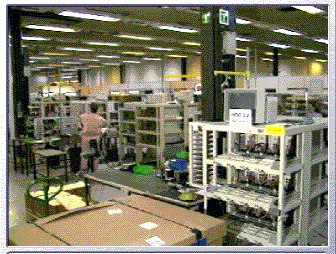Web-based Video Workbook
for
The Concurrent Engineering
Video Programs Vol. 1 & 2,
on Video Tapes 1 & 2, or on Digital Video CD-ROMs
for Engineering, Computing and Management Students and Professionals
by
Written and presented by Dr. Paul G. Ranky and Industrial Contributors, including Mr. R. B. Syme, IBM Storage Products Operations Manager, Mr. Gerry Edgar, Manager, Mr. Chris Skerry, CIM Manager, Mr. Peter Neal and Mr. Mike Moulton, Managers, IBM Havant (UK) Ltd, Mr. Robin Truman, CIM Operations Manager, GPT, Mr. John Foster and Mr. Carlton McD Langton, Industrial Design and Realisation, GPT-GEC Plessey Telecommunications Ltd, Mr. Paul A. Francis, Director, International CIM Consultants, Dr. Allan Parker, Technical Director, Mr. Mark Vaux, Mr. Mark Sealy, Mr. John Halton and Mr. Roy Davis, Managers, Lucas Engineering & Systems Ltd, Mr. Les Pratt, Marketing Manager, Yamazaki Machinery (UK) Ltd, Mr. Geoff Harrington, Director, ISIS Informatics Ltd, Mr. Jim Corlett, BKT Ltd, McDonnell Douglas Information Systems Ltd, ERT Ltd, Hitachi Seiki (UK) Ltd and others.
Published by CIMware Ltd. UK and CIMware USA, Inc. at http://www.cimwareukandusa.com, © Copyright by CIMware Ltd. UK and CIMware USA, Inc., 1999 - 2000.
If you are a viewer of a legitimate copy of the above video programs on tapes or on CDs, please feel free to view and / or download this workbook, with its full contents, FREE of charge, but always mention the website: http://www.cimwareukandusa.com and the author(s) as the source!
Website: http://www.cimwareukandusa.com
Optional on-line email support: cimware@cimwareukandusa.com
Please use this Workbook together with your Video Tapes or Video CDs!
Please note, that the digital video quality on the CD-ROMs is high and can play in full screen on a multimedia PC, MAC or Unix machine. For best quality use QuickTime ver. 5 or later, available FREE from the http://www.apple.com/quicktime/download web site. The video frame images inserted into this workbook are designed to download relatively fast over the average web-link, therefore their quality is poorer than that of the digital videos in the CD-ROMs.
This section covers the following:
Tape/Vol. 1: Introduction and Overview. Program structure. What is Concurrent /Simultaneous Engineering (CE/SE)?Tape/Vol. 2: Competitive pressures and priorities in Europe, USA and Japan. Customer satisfaction
![]() Additional
reading on Object Oriented Concurrent (hardware and software)
Engineering: as a new development, view the free, electronically
published R&D journal, ADAM with IT
(Advanced Design And Manufacturing with Information Technology) at
this web site, as well as enjoy the hotlinks to other web sites via
ADAM's WebCorner; both just a click
away...
Additional
reading on Object Oriented Concurrent (hardware and software)
Engineering: as a new development, view the free, electronically
published R&D journal, ADAM with IT
(Advanced Design And Manufacturing with Information Technology) at
this web site, as well as enjoy the hotlinks to other web sites via
ADAM's WebCorner; both just a click
away...
Tape/Vol.
1. Starts Here: Introduction and
Overview. Program structure. What is Concurrent /Simultaneous
Engineering (CE/SE)?
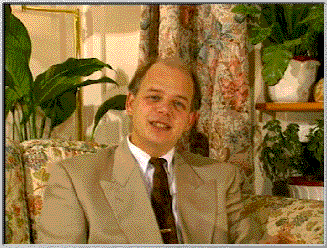
In this interactive video program we discuss the following:
Concurrent, or simultaneous, or parallel engineering, meaning exactly the same, is a systematic approach to the integrated, object oriented concurrent design of products and their related processes, including prototyping, manufacturing, assembly, quality control, support, disassembly and other processes.
This approach is intended to cause developers, from the outset, to consider all elements of the product life cycle, from conception through final disposal, and recycling, including quality, cost schedule, user requirements, demanufacturing, reengineering and total life-cycle assesment.
In the 21st century, concurrent engineering should be viewed as a networked, distributed process (with various classes of objects interacting over intranets and the Internet), that integrates design, manufacturing, assembly, demanufacturing, reengineering and total life-cycle assessment processes on a global basis.
The purpose of concurrent enginering is to
As you will experience throughout the entire program of study and these videos on CD-ROMs, there is a very strong relationship between real-world concurrent engineering and the more abstract, or virtual world of object oriented software engineering and software development. When viewing these tapes keep this in mind and keep reminding yourself of this very important analogy, since it will help you to decompose and understand complex systems, as well as build better systems. Enjoy!

The diagram below illustrates different allocated and commited
costs during product development stages based on data collected by
Professor Lester Gerhardt, RPI, New York and Professor Steven C Y Lu,
University of Illinois, USA. (Note, the importance of resuable
objects both in the real as well as in the abstract software world,
when trying to reduce time-to-market, as well as all related design
and manufacturing costs).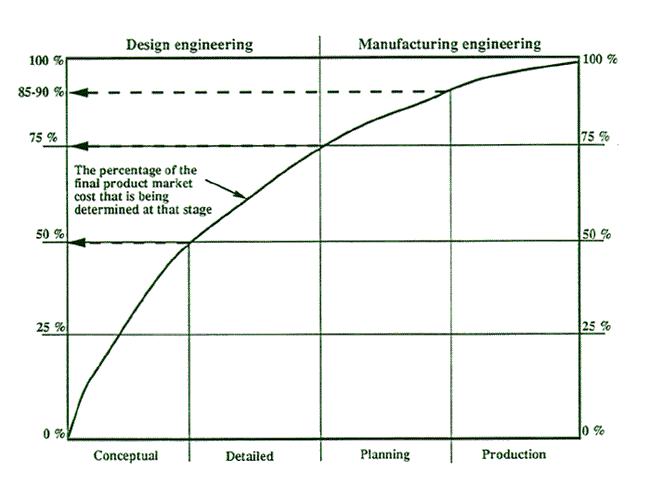
The extended diagram below illustrates the different actual and commited expenses during product development.
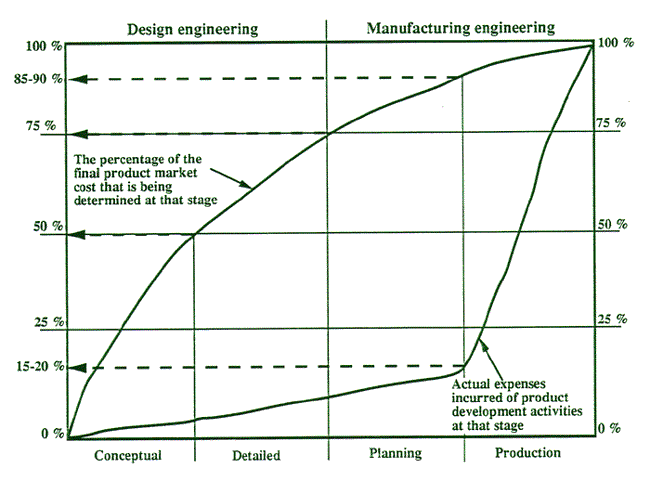
It is very interesting to recognize similar cost issues in the real world of object oriented concurrent engineering and in the virtual, software world, when developing new software products... view this section with this important experience in mind... (Also note, that according to Rational Inc., USA over 76 percent of software projects fail due to poor planning, design and the lack of object orientation when designing, implementing and testing such products... (Object oriented design was invented over 4000 years ago when the first pyramids were built by engineers in Egipt).
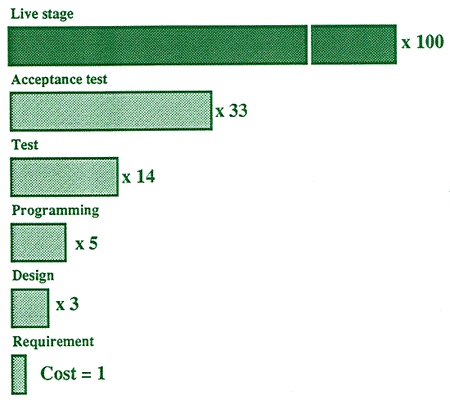
The diagram below represents an important alternative view of object oriented cocurrent engineering. It emphasizes the similarities between just-in-time (JIT), or inventory savy production planning and control as well as concurrent hardware and software product development. In both cases lead time reduction is crucial... The challenge is that if lead times are reduced the "rocks might come to surface"... and hit the boat... therefore the fundamental goal is as always: reduce waste, else your competitors will beat you on time, cost, quality, and other issues).
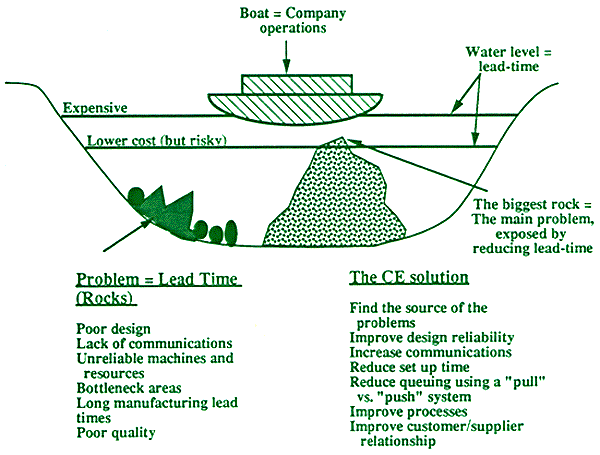
As a summary and conclusion, note, that this figure, as many other figures and concepts in this program underline the similarities between hardware and software development and the benefits of concurrent product and process development. As another important lesson: management must be able to make interdisciplinary teams work together. Such teams typically consist of marketing, system analysis, system design, hardware, software, quality control, packaging engineers and engineering managers.
As part of a team, discuss, or if you are studying on your own, consider the following:
ENGINEERING:
COMPUTING:
MANAGEMENT:
In this video program we discuss the major competive pressures, including the folowing:

An interview with Mr. R. B. Syme, IBM Storage Products Manager, covering various aspects, including:
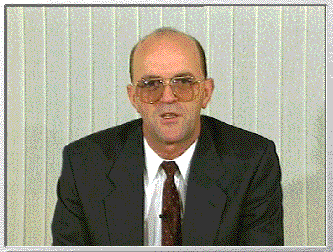
Interactive break discussion:
Interactive break discussion:
